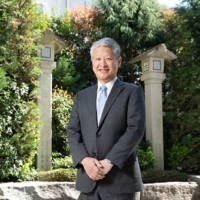At twilight, a kitsune (fox) and akaname (filth-licking toilet demon) lead a group of excited Tokyoites and visitors around Sumida Park to discover other yōkai (supernatural creatures from Japanese folklore) on the paths and in the bushes. The children shriek with surprise as they come across a tengu (long-nosed demon), a bakeneko (supernatural cat) and, later, a warai hannya (laughing female demon) in red heels, all dancing under Tokyo Skytree’s twinkling lights.
These haunting figures are a mix of butoh and contemporary dancers in costume, and their meandering performance is titled “Yokai Encyclopedia Hokusai's 100 Stories One After Another.” The comical and spooky show — based on Katsushika Hokusai’s incomplete ukiyo-e print series, “One Hundred Ghost Stories” — is one of a dozen programs paying homage to the Edo Period (1603-1868) artist and his hometown, the capital’s Sumida Ward, under the umbrella of the Sumida River Sumi-Yume Art Project.
The program, known in short as Sumi-Yume, started in 2016 to coincide with the opening of the Sumida Hokusai Museum and focuses on not only Hokusai but also the residents of Sumida Ward, whose lives were often depicted in the artist’s woodblock prints. The area’s past and present serve as the project’s inspiration, and current residents participate in various events over a four-month period, including sumo wrestling with giant paper dolls, playing piano or ping-pong on the river banks and open-air film screenings.

















With your current subscription plan you can comment on stories. However, before writing your first comment, please create a display name in the Profile section of your subscriber account page.